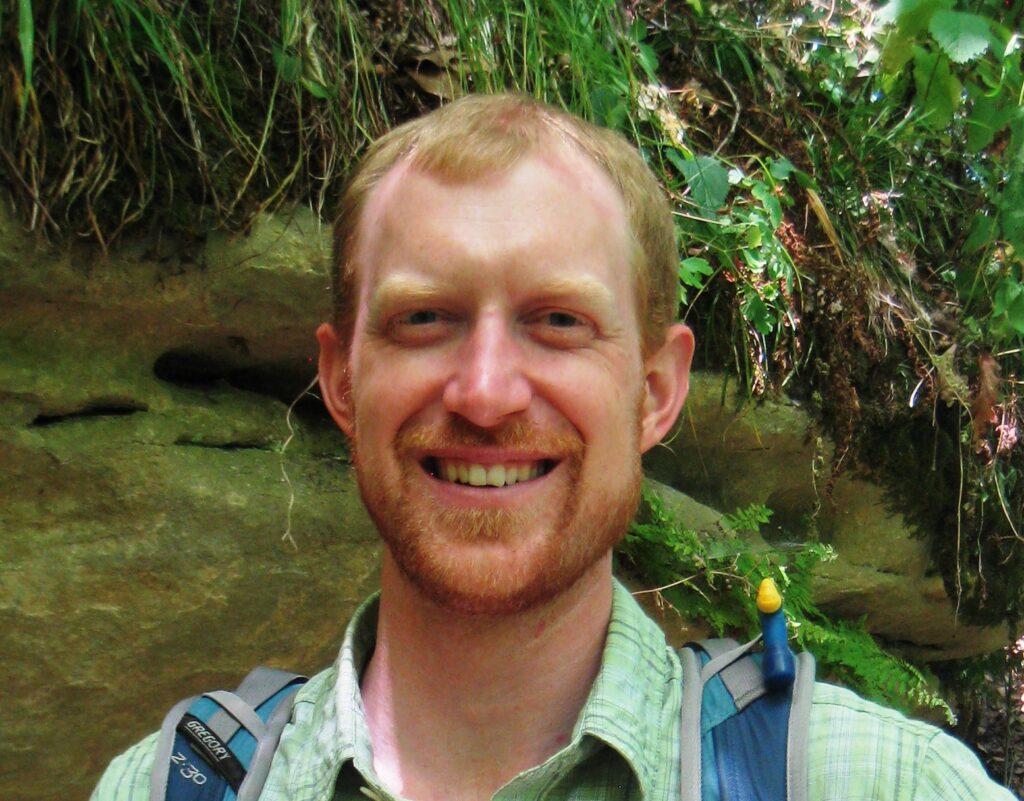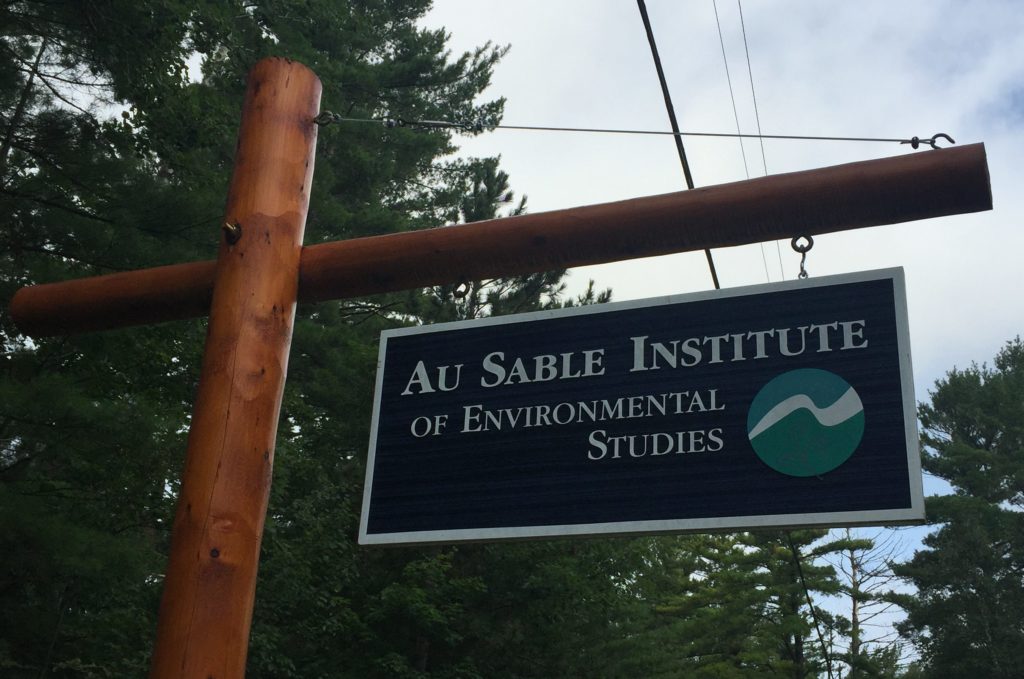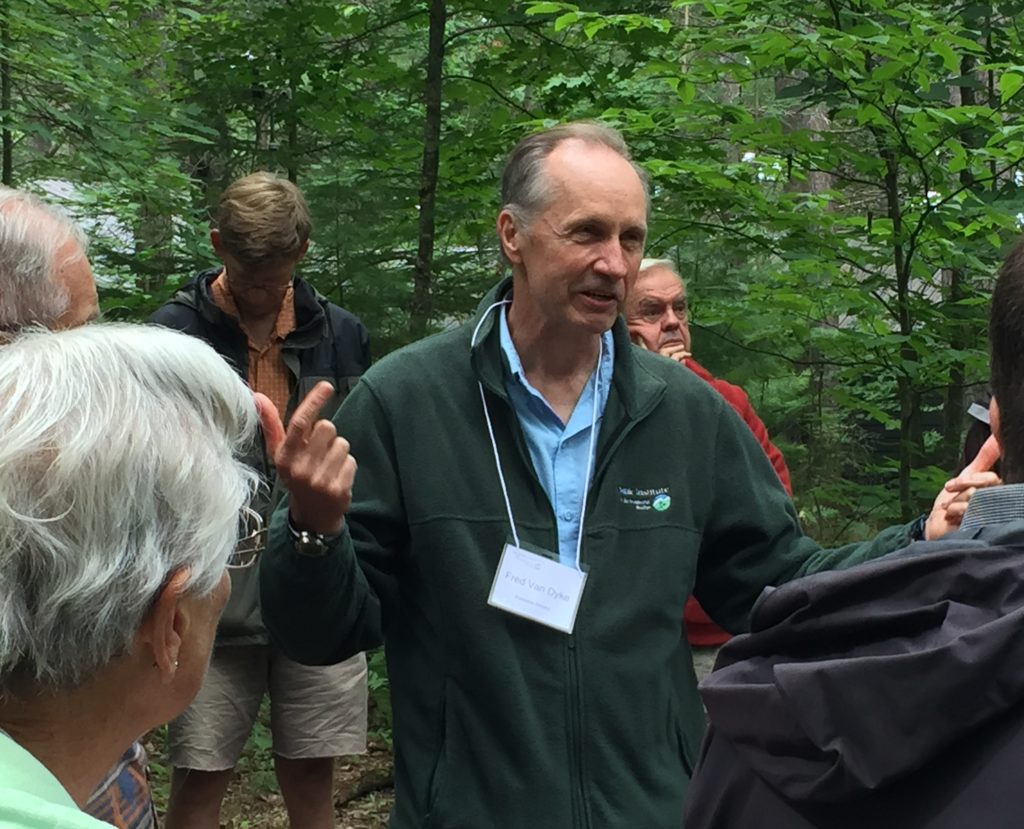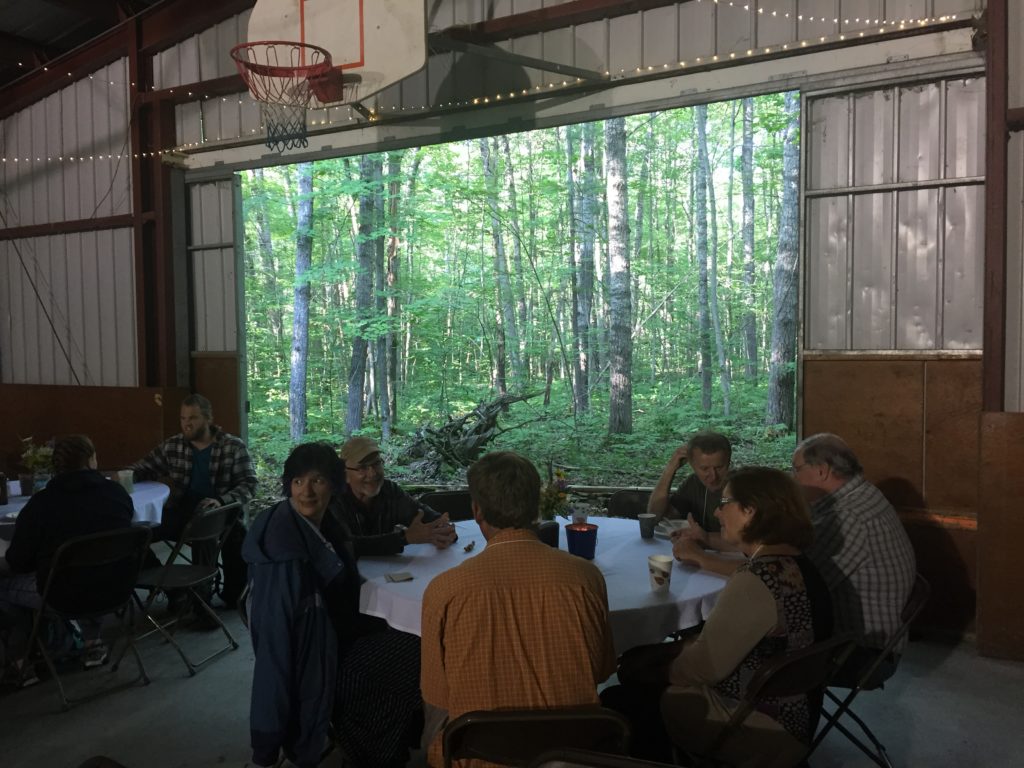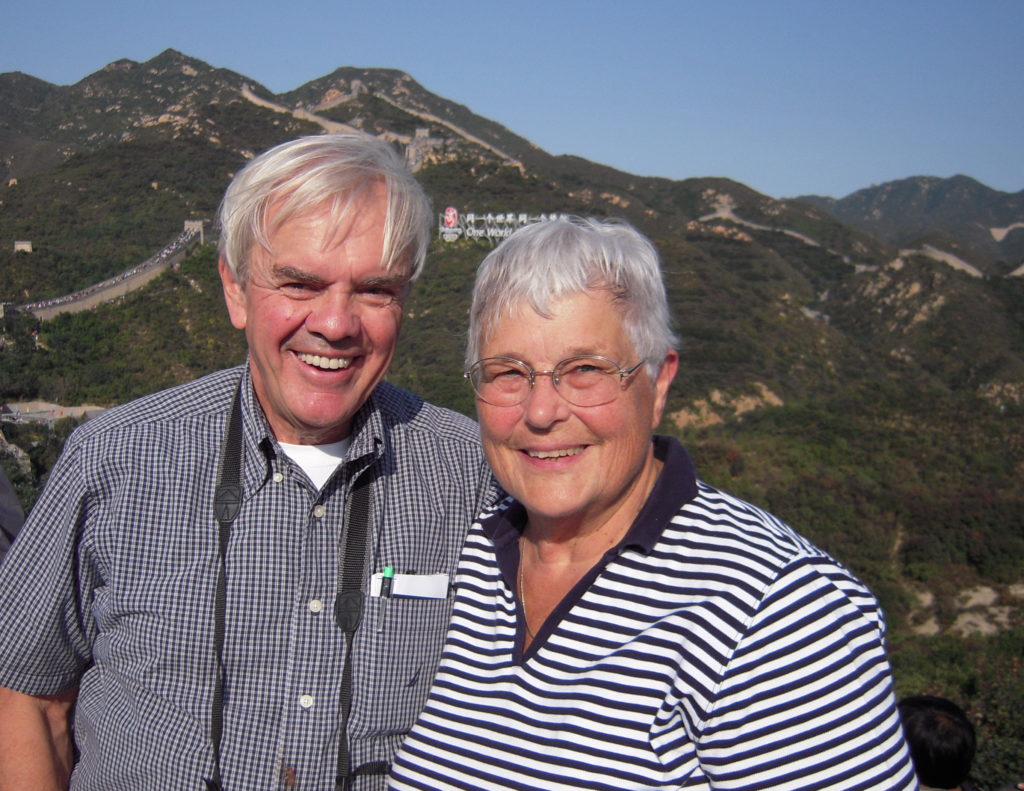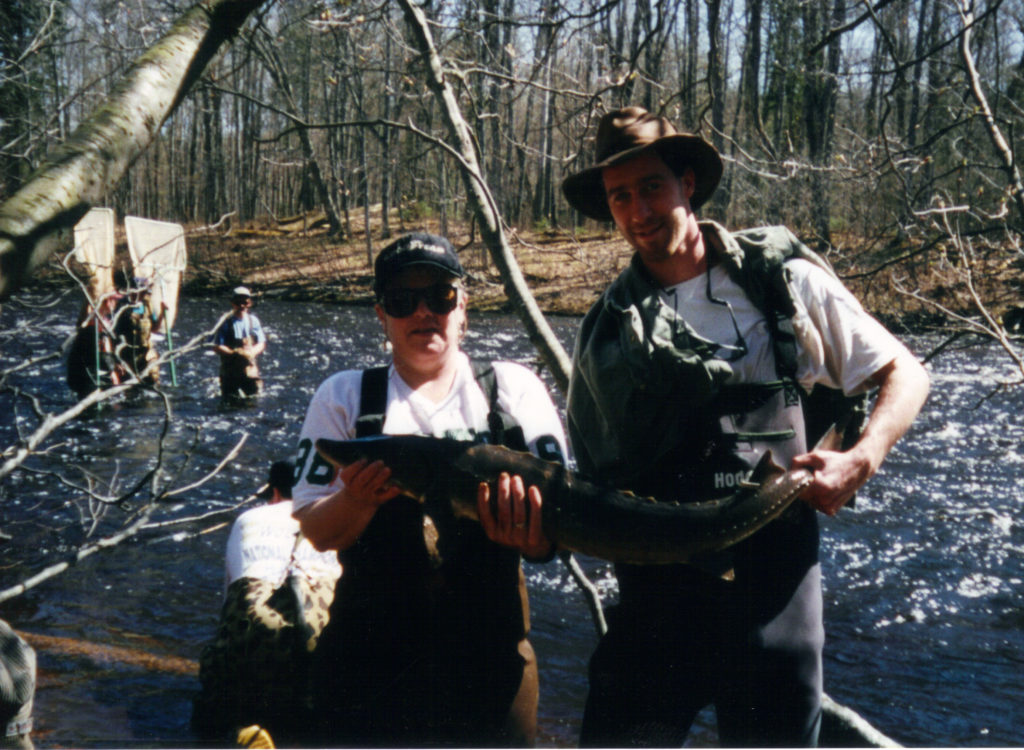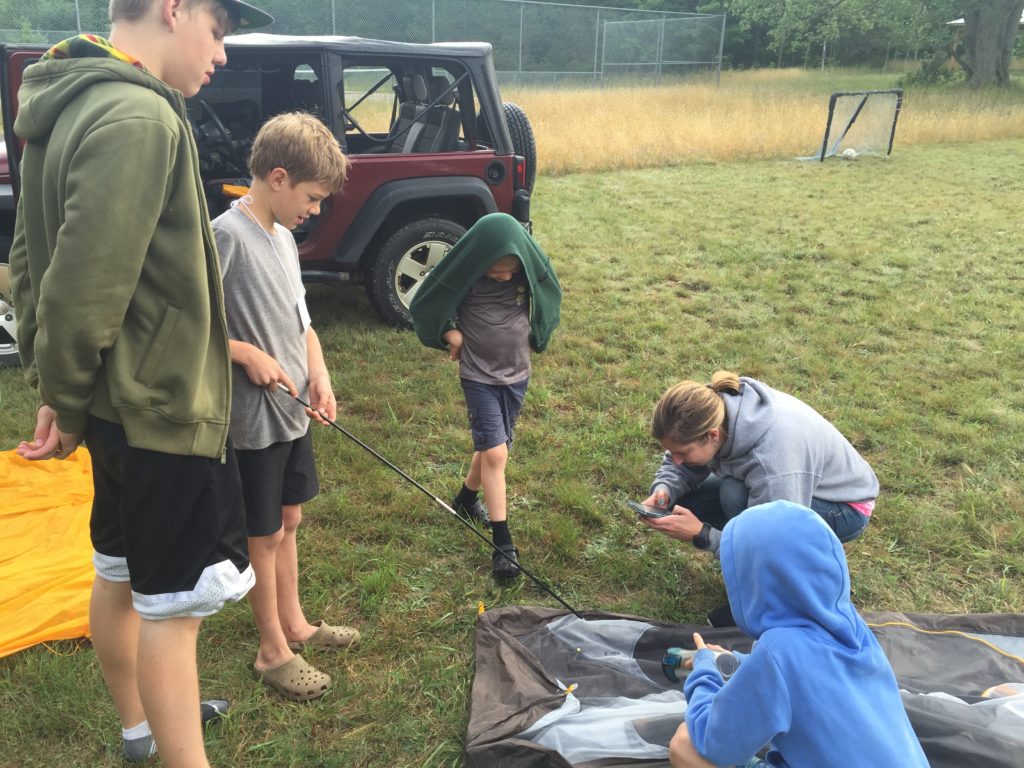Are you using some of the monetary blessings you’ve received from God for Creation care?
Yes, recycling, greening your house’s energy, Creation-friendly landscaping, and eating foods that come from God-honoring forms of agriculture are all ways you can live a more holy, more whole faith-life.
But you should also look for ways to have impact beyond your personal sphere. Giving to organizations doing good work for God’s earth is a meaningful and satisfying way to do so.
Giving for Creation’s protection and restoration represents a tiny proportion of American philanthropy. According to Giving USA 2022: The Annual Report on Philanthropy for the Year 2021, giving towards the environment and animal welfare represented just 3% of all American philanthropy in 2021. Just 3%.
What’s also striking is that individual giving still outweighs foundation and corporate giving by a long shot. Big gifts and grants by foundation and corporations may make you think your gifts aren’t significant. But they are. In 2021, 67% of giving came from individuals. If you include bequests, then the percentage grows to 76%.
Your personal giving matters.
It’s vital that Christians give more to organizations making a difference for Creation. Creation matters to God. Damage to Creation has been compounding for decades and even centuries. Fostering and fighting for healthy, vibrant Creation is a way to honor God. It also is indispensable for giving Creation and the people (that’s all of us) who depend on it.
We cannot say we love God and our neighbors and simultaneously stand by while God’s earth is spoiled. Our neighbors, now and in the future, need a living world if they are to have breath, health, food, play, and heart-opening spiritual wonder. And each living creature has its own value to God who feeds ravens and sustains lions.
I urge you to make gifts for the protection and restoration of God’s Creation as 2022 comes to an end.
To help you do that, here are some tips on thoughtful, impactful giving for Creation care. My wife Mayumi and I have been giving significantly to organizations and causes working for Creation for more than a decade. I also have worked for environmental non-profits for over two decades and served as a fundraiser for over 10 years. I believe you will find at least one useful nugget in what you read below:
Tip #1 – Budget (and Bank) for Giving
You’re unlikely to be a committed and effective giver, if you don’t plan to give.
In keeping with one of the key principles my wife and I learned from the Financial Peace University course of David Ramsey, we create a budget each month that reflects unique income and expense factors we can forecast. We specifically budget a set amount for giving to the church my wife attends and for general giving as well. Our total giving usually represents a little under 10%. We want to do better than that in 2023.
Each month we transfer the general giving allocation into a separate “Giving” bank account. Then, when we make charitable giving decisions, we transfer the gift money back into our checking account for offsetting the check we write or the credit card expense.
By budgeting for giving, we commit ourselves to giving. By holding the general giving funds in a separate account, we protect those funds from other uses. We also feel peace of mind when making the gifts because we know the money is there specifically for that purpose.
Tip #2 – Commit to Giving to Creation Care
If you’re still reading this (and I hope at least some people are!), then you care deeply about Creation. You care about the streams, oceans, mountains, prairies, rain forests, and even the teeming rhizospheres of God’s earth.
So don’t just have those abstract values. Apply those value to your giving. Carve out significant giving for Creation-related causes when you work through your giving plan for a year.
I would suggest this complementary tenet as well – the less your church does around speaking and acting for Creation the more you should give for Creation care beyond the church. Ideally, your church will be an outpost of God’s kingdom where our Creator God is worshipped and where people and Creation are cared for in creative ways. But if our human duty and joy of prospering Creation is neglected by our churches, then our whole faith will prompt us to want to compensate for that neglect.
Even if your church does integrate God’s earth into its life and culture, I still urge you to give for the care of Creation. Giving is acting. Generous giving for the keeping of God’s earth is a fruit of genuinely loving our Creator God.
Tip #3 – Be Organized and Do Your Homework
I keep a spreadsheet for tracking what we have given to different groups each year. The spreadsheet I’ve developed also allows my wife and I to figure out the best allocation of giving funds we have set aside. And when I come across new groups over the course of the year, I’ll add them to the spreadsheet to look into further at a convenient time. I also find a holding spot for flyers and solicitations.
However I hear of a group, I will begin my research with a visit to their website. Later, I may check out their social media feeds as well subscribe to their email newsletter. From a website you can get a pretty good idea of who the people are of the organization (including board members), what their programs are, and what their mission is. With most groups you will find an annual report on their website as well which should give a good and clear outline of what the group is doing.
In all that you read, look for purposefulness and tangibility. What are their specific strategies and programs? Do they seem well organized? What specifically are they trying to accomplish and how are they doing so? Be cautious about groups that have stirring language but do not communicate concretely what they are doing.
In short, take some time to do your homework before writing a check. But also accept the fact that sometimes you can’t fully know the true nature of an organization until you make that first gift and then have more contact with them.
Tip #4 – Give Across Several Categories of Creation Care
I suggest allocating your Creation care giving across the following four categories::
A. Christian Organizations Engaged in Creation Care: We like to support Christian organizations fostering a knowledge of Creation and a culture of Creation stewardship. Two excellent examples are Au Sable Institute and Plainsong Farm. Another group we are likely to begin giving to this year is A Rocha, a family of Christian conservation organizations around the world.
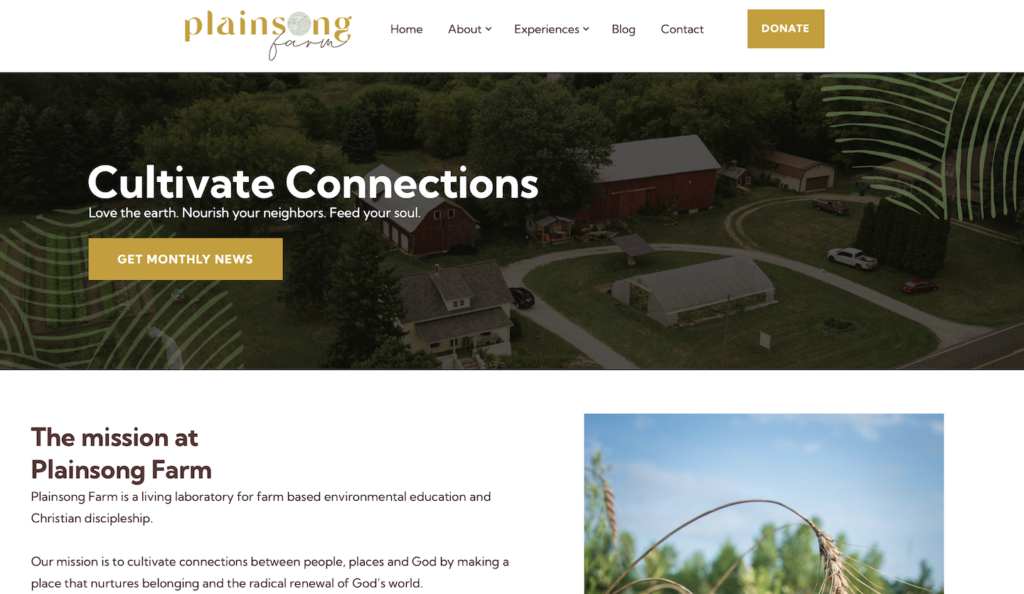
Located just north of Grand Rapids (Michigan), Plainsong Farm uses sustainable farming and Christian community building to experiment towards a healing practice of Christian faith fully integrated with the care of Creation.
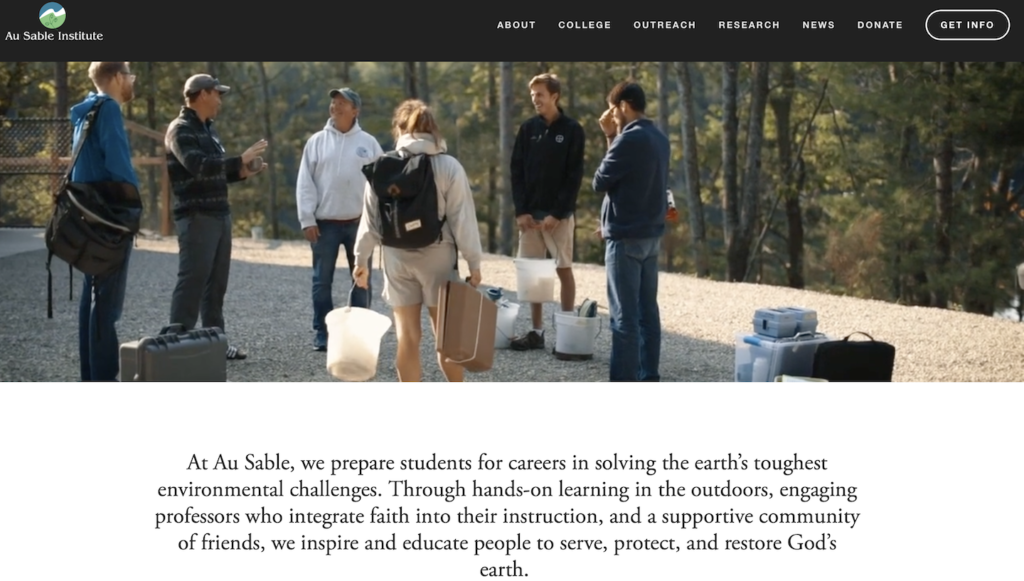
To learn more about Au Sable Institute, visit its website and check out the interview with its executive director (Jon Terry) in our September 2022 blog post.
I look for organizations in this space that are: (1) clearly Christian in identity, (2) doing tangible things on the land and with people, and (3) unapologetically convinced that Creation is an essential element of the Christian faith-life.
B. Local and Regional Groups: By supporting conservation and advocacy groups who work near you, you support Creation where you live. Even if where you live doesn’t seem as wildly beautiful as the Rocky Mountains or the Amazon, your neighborhood, state, and region still need keeping and regeneration.
Every square inch of Creation matters.
It shouldn’t be hard to find a number of local groups to choose from. Land trusts are often a very good option as they protect land from development (through land purchases and holding easements) and steward the land they own. There are also often groups advocating for rivers and watersheds as well. One recent subscriber to this website’s email feed shared news of the river group he works for in his semi-retirement – New River Conservancy. I worked for Friends of the Chicago River for four years, too. Water and watersheds unite everything.
And, of course, there are many other options, like local chapters of the Audubon Society. If you have a friend who is involved in conservation in the area, I’d encourage you to talk with them and get their inside scoop on which organizations are doing the best work around you.
C. National and International Groups: I was tempted to make a distinction between national and international groups, but quite often groups working at a national scale also work beyond national borders. My main insight here is to look for groups doing on-the-ground conservation and protection of Creation and to also look for groups addressing laws and policies that shape how Creation is treated by individuals, states, nations, and corporations.. An example of an on-the-ground conservation group working at a national and international scale is The Nature Conservancy, which generally avoids policy issues and anything smacking of politics. Examples of more policy-level, advocacy-type organizations are the Natural Resources Defense Council and Earth Justice. We need both types.
One challenge is that the larger a group is the harder it is for the organization to tangibly and clearly explain their activities and impacts. Large organizations can make bigger mistakes and lose sight of their core mission and values. Larger organizations also find it hard to avoid doing fundraising in a bureaucratic, impersonal way. This tends to turn me off, but then I ask whether they are filling a unique niche and doing a great deal of good. If they are, I accept who they are. World Wildlife Fund and Sea Shepherd Conservation Society are examples of international groups that fill vital niches and work pretty hard at communicating their impact clearly. Are they perfect? No. But on balance they are doing good and unique things.
D. Where People & Creation Meet: Let me give you an example of this kind of giving. Check out People and Carnivores. This group primarily works in the northern Rocky Mountains where its staff offer creative solutions for preventing human-carnivore conflicts. The organization does this by devising and supporting the use of special technologies and hacks that keep carnivores from hurting people and people’s property in non-lethal ways.
This might seem a little less sexy than a group buying and restoring a 1,000-acre ranch. But, in my eyes, the group is tackling a dimension of a fundamental human-Creation challenge. How do we live with wild creatures, especially those who can hurt us, as humanity spills into previously wild places? The technologies and cultural work that People and Carnivores develop have bigger lessons for us all.
Another very local example that my wife and I also support is COOL Learning Experience. This non-profit, operating out of the First Baptist Church of Waukegan, Illinois, provides summer camp opportunities for children and youth who would otherwise not have those opportunities. What makes it fit in with the Creation care theme is that its leader – Barbara Waller – has integrated nature learning and appreciation into the program from the beginning. This is because Barbara loves Creation and wants all children, not just those who are well off, to have exposure to nature.
Preserving wide open and wild spaces and the nature that lives there is very important. But cultivating better nature-people relations in our everyday interactions is also critical. I would especially urge you to support organizations working to foster farming that treat God’s earth with care and respect. Agriculture impacts Creation and people in a multitude of significant ways. A good example of a nonprofit organization working in this space is the Land Stewardship Project. LSP, which works across the state of Minnesota, has an excellent newsletter and podcast.
My last point – listen to your heart in your giving choices and categories. What Creation issues especially resonate with you? Is it a particular place? Is it a particular animal or habitat? Is there a person who has a creative idea around Creation Care who could use some resources to further explore their calling? Express who you uniquely are and what aspect of Creation speaks to you through your giving.
Tip #5 – Patiently Discern, Learn, and Build Relationships
Mayumi and I tend to start our giving relationship with an organization off cautiously with a small first gift. We’ll then read their communications carefully and track how they handle their fundraising process from there. If we like what we see, we gradually increase our giving. If we don’t, we’ll likely end the relationship or plateau our giving.
Personal thank yous say a great deal about the organization’s commitment to appreciation to donors and to the culture of that organization. Conversely, a million followup fundraising requests are a big turnoff to me.
I also encourage you to pay attention to the content of the communications coming from the group. Well written? Communicating tangible impacts? Honest about challenges they are facing? Regular? Generally speaking, groups other than very small non-profits should have a regular newsletter (email or print) or at least an annual report. If the only thing you get is fundraising letters, then I would recommend terminating that giving relationship. This is something we’ve done a number of times. Don’t feel bad. It’s all part of the learning process.
I’d also recommend attending an event or webinar that the group offers. Those will give you a sense of the culture and character of the group.
Welcome calls and letters from the group’s representatives as long as they are respectful of your time and boundaries. Ideally, they will thank you and be curious about your interest in the work they are doing. Ask them questions in return. Why does that person work or volunteer for the group? What is the biggest challenge that group is facing around the issues it is working on? Listen for candidness and authenticity. Share that you are motivated to give by your faith. Down the road, the group may want to meet with you as a way to ask for more and larger gifts. That is normal. Determine what feels comfortable to you.
The biggest point of discernment needs to be paying attention to the language and rhetoric of each group. Fundraisers for non-profits are tempted to exaggerate what their group accomplished and to not acknowledge the degree to which accomplishments were the results of partnerships with other groups. Good groups give credit to their partners and don’t claim far more mission impact than they really are having. Even “statistics” can be deceiving. Again, this is oftentimes not intended to be deceptive. It can be hard to calculate exactly what impact an organization’s work has over time, and non-profits are pressured to generate metrics of impact.
Tip #6 – Rebuke, Instruct, and Forgive
I guarantee that any non-profit organization you support will do something that you disagree with or are disappointed by at some point.
It goes with being human.
We know from the Bible there is not one who is without sin. And when you put together lots of sinful people together in a complex organization, the likelihood of problems, issues, and mistakes rise exponentially. You’re probably not surprised by this when it comes to government or corporations. But I’ve found that when idealistic organizations committed do those kinds of things, people tend to be even more outraged.
What I encourage you to do is be a wise Christian when you experience the sting of disappointment.
This starts with assessing the situation carefully. Is the issue a human mistake in an organization stretched very thin? Did the organization apologize sincerely about the issue or mistake? Have changes been made? Is the issue systemic or just a fluke or something that can be addressed by changing a staff person?
Part of your wise Christian ethics should also be sharing your rebuke with the nonprofit. Let them know you are hurt, frustrated, or even angry by what they have done or not done. Proverbs is full of statements asserting the value of rebukes, advice, and instruction. Jesus also rebuked people and groups frequently. A rebuke expressed out of love and common values is actually a gift. It gives the organization, especially one you have given to repeatedly, the opportunity to repent, learn, and get better.
A Christian is also ready to forgive when forgiveness is asked for and even if it is not. Once you have shared your rebuke and expressed your hurt, give it to God and decide with calmness and prayer whether you should continue to support the group. You may want to put a pause for a year and see if they change. You may want to give less. You may decide to stop altogether. It all depends on whether that issue was minor and temporary or major and systemic.
In short, don’t stop giving because of one small mistake. And don’t keep giving regardless of how serious the organization’s problems are. Apply wisdom and the fruits of the spirit and look at the situation as a whole.
Tip #7 – Be Generous Once You Find a Really Good Organization
Once you’ve given to an organization a few times and you have a good sense of their efficacy, professionalism, and commitment to good philanthropy, then I’d encourage you to ramp up your giving over time.
It’s good, of course, to give any amount. But impactful gifts around issues and topics that you care about are more meaningful. They also simplify your giving and records. We give a variety of small gifts, some medium-scale gifts, and several larger gifts each year. When we give a large gift to an organization we’ve gotten to know and believe in, it feels really good. It really does. And, it feels even better, when there is some kind of personal expression of gratitude from the group.
And when you find a really good organization with good leadership, staff, and programs, consider making monthly gifts to them instead of one lump sum at the end of the year. This makes their budgeting easier – imagine if all of your annual income came in December! Also consider including them in your estate plans.
Happy to Help!
Would you like to talk through your plans and questions in giving for the stewardship of God’s Creation? I’d be happy to talk by phone.
When I began writing this blog post, it was not my intention of offer to talk with readers about giving. But I’ve realized in the writing of this that I am more experienced in non-profit organizations, fundraising, and philanthropy than I realized. I would like to help people like you be effective and happy in your giving for God’s earth.
You can reach out to me at wholefaithlivingearth@gmail.com.
P.S. If you have a charity you especially like, please share it as a comment so we can all learn from your experience. Happy giving!


